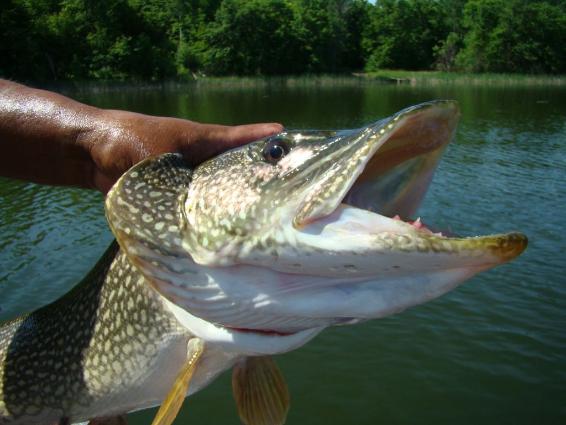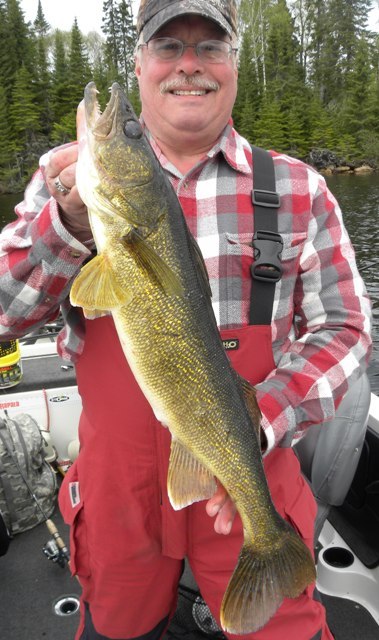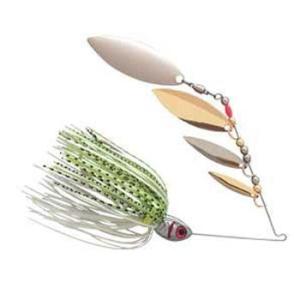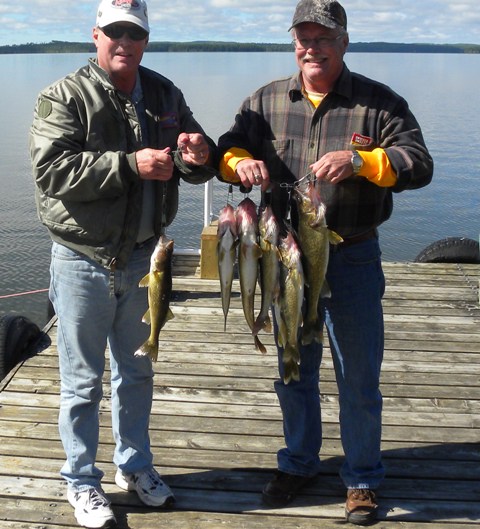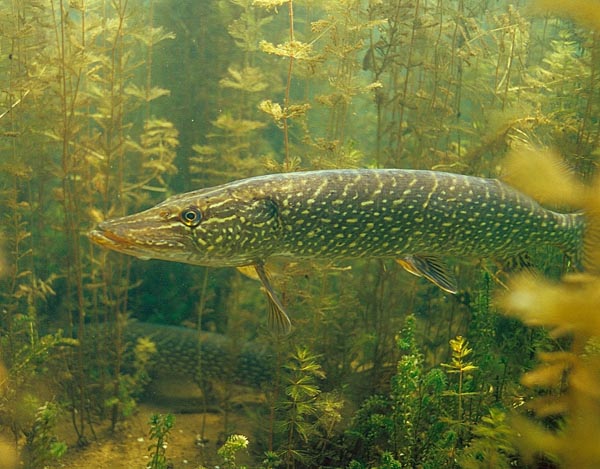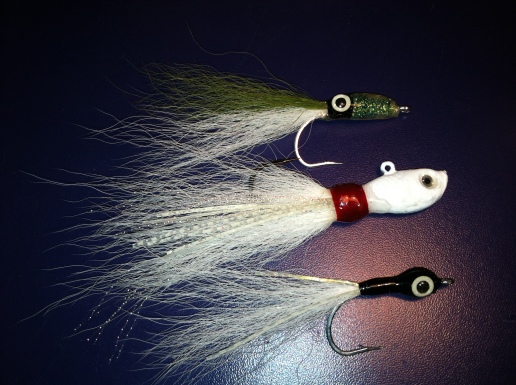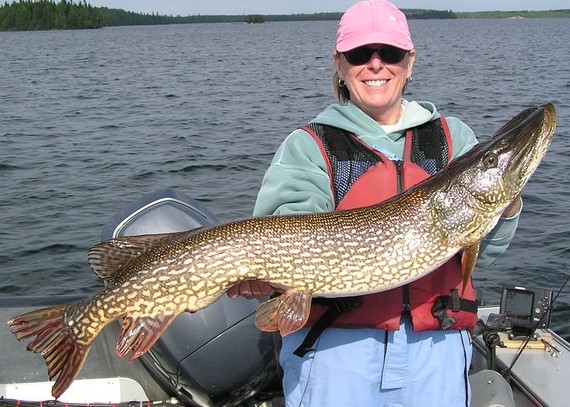There are three times during the open-water period that can be considered prime for big pike.
Each of these windows of opportunity lasts from 10 to 14 days and is key for large-sized northern because during this time, the bigger fish of this species are more concentrated in the shallower water. Here’s where they can be found easily and caught with lures that allow anglers to cover some ground in their search. Once these big pike head to the cool depths where they spread out and suspend, finding and catching them requires tremendous amounts of luck. It’s better to time your fishing for big pike to these three periods to take advantage of factors that give the edge to the angler instead of the pike.
- The first period is right after ice-out, which can be a problem in many areas where the season is closed on inland waters.
- The second period is as the shallows warm, when the big pike transition from shallow water to deep water.
- The third is right before a water body turns over in the fall, when big northern will move up into shallow water after spending summer in the depths.
Right after ice-out, you find huge northern pike in the spawning areas. These will be shallow weed-choked bays in the lake, and weedy backwater bays up the river.
Little northern aren’t hard to find and catch, but the big pike are a challenge and they put up one heck of a fight. When you hook into a really nice pike, you can’t make any mistakes.
Don’t let the cold water temperatures right after ice-out deter you from using an approach that allows you to cover some ground. This is the perfect time to be tying on a spinner bait because it’s a lure that works well in shallow vegetation.
The pike move up into whatever vegetation is still standing from the previous year — and any newly emerging weed growth that can often be found in very shallow depths. Use a 3/4-ounce spinner bait with a large Colorado blade. This lure casts a long way and can be retrieved slowly, if that’s what’s necessary. You can also burn it a little faster just below the surface in the real shallow water.
Some of the pike will have already spawned, more than likely while ice still covered the surface. Others are still spawning or are preparing to. Occasionally you may catch a big pike and you can tell is post-spawn, most of the really big pike after the ice has just gone out are still fat with eggs and just on the verge of spawning. All trophy fish are released back to Wawang Lake.
It’s the transition period when the shallow shoreline regions are warming and the big northern are moving into the deeper, cooler water when most anglers get their first shot at big pike. This period usually falls into a two-week time frame a couple of weeks after the traditional opener. Anglers who can be on the water at this time can capitalize on big fish that are still in reaching distance for a spinner bait or crank bait.
It’s no secret that big pike like the colder water. You will seldom find the bigger pike in the shallower regions in the lake during the summer months, because the water temperatures there are just too warm for their liking. If you miss this transition period, you’ll likely be into fall before you get another chance at a really big pike, because those bigger fish get hard to come by when they disappear into the depths.
This is a good time to get out Spoon plugs. Any lake that has a well-defined deep weed line is a perfect candidate for Spoon plugs.
The Spoon plug is a lure that was promoted years ago by famous angler Buck Perry, and is a staple of many diehard big-pike anglers. It allows an angler to troll a weed line or break line precisely at speeds of 1 to 4 mph.
You can cover some ground and find out where those pike are, although during the transition, it’s more important to have your lure in the right place than worrying about the speed. Those Spoon plugs will get the lure to the right depth and stay on the weed line, no matter what speed I find triggers the bite.
So how does an angler know when the transition starts and ends? Water temperature signals the start. When the surface temperature hits about 67 degrees, you know it’s going to start pushing those fish out. This could be early June during some years and early July in others. The weather is the biggest determinant in when this transition period occurs.
You can tell it’s over when the fish quit the bite. You’ll have a week where the weed line and shallow rock piles are producing big pike with some consistency, then one day you go out there and they’re gone.
The pre-turnover period is when those big pike come out of the deep water as the shallow water cools, just prior to the lake rolling over.
Turnover is a tough time to call, which is why the guys who can get out on a body of water often generally hit this time just right. If you miss it, then there is a period for a couple of weeks after turnover when the fishing is tough all over a lake. It’s just luck and timing.
The big pike will be roaming over the tops of the vegetation, you’ll just want to be ticking the tops of the cabbage, coontail or milfoil with that spinner bait, and if the blade is just a nice slow thump, that’s perfect.
Back troll slowly over the vegetation, with only about 25 to 35 feet of line out — the line from the reel at a 45-degree angle toward the lure and the spinner bait right above the vegetation. By wearing a good pair of polarized glasses, an angler can watch the bait as it dances in and around the stalks and branches. As the boat moves from shallower to deeper water, drop the rod tip or lets out a little more line until the lure starts ticking weeds again.
If seeing an opening in the weeds, drop the rod tip and let the lure settle in. It’s amazing how often you see the big pike react to the spinner bait and come out of a big pile of milfoil or coontail and attack that lure.
These big pike are the top predators in a lake and they fear nothing at this point. You’ll see them swim right into the prop wash to hit a spinner bait or spoon as it’s trolled out from the boat.
Back trolling allows more depth control. It’s easier to get the speed down and work a depth more thoroughly when backing the boat. If the pike are deeper switch to crank baits or Spoon plugs, then front-troll. But when pulling spinner baits over the tops of the weeds, back troll.
Open-water season in northern Ontario lasts about 28 weeks or so and the time frame for quality big-pike fishing is between five and six weeks, so it’s imperative that you be on the water for these peak times. Those big pike don’t give you many opportunities, so you need to take advantage of every one ’em.
Follow our HUNTING BLOG




